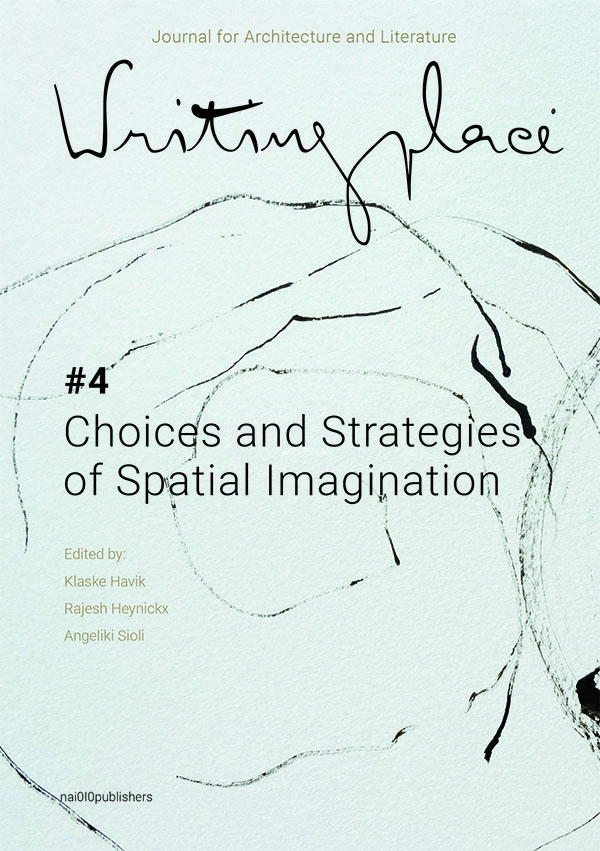Fidelity and Freedom in the Theory of Adaptive Reuse
Thinking with T.S. Eliot and Walter Benjamin
DOI:
https://doi.org/10.7480/writingplace.4.5276Abstract
This essay contributes to the emerging theory of adaptive reuse of architectural sites by borrowing vocabulary that relates to the transposition between architecture and translation. Three aspects seem relevant in both disciplines: (1) carrying over meaning with respect for (2) tradition and (3) craftsmanship. In the process of adaptive reuse, buildings often receive a new program entailing shifts of meaning; hence the analogy with the art of translation. In addition to this negotiation of meaning, an attitude to tradition is also a valuable lens to approach this transposition between architecture and translation. In particular the dialectic process between fidelity and freedom. Walter Benjamin’s essay The Task of the Translator (1921) and T.S. Eliot’s Tradition and the Individual Talent (1919) offers richness and accuracy to the growing vocabulary on adaptive reuse. The essay illustrates this argument by looking at the remodeling of a 1859 prison into a Faculty of Law of the University of Hasselt in Flanders. The case study wants to illustrate this process of making both the original and the translation recognizable as fragments of a greater language. The enclosed typology of the prison was changed into an open, urban-oriented faculty of law. It shows us how memory can be both a generous database as well as a selective process. How memory and oblivion are two essential conditions for architecture to negotiate with heritage.
References
--, ‘Encounters’ at deSingel International Art Campus/Flemish Architecture Institute (VAi), Antwerp, 2014.
Bie Plevoets and Koenraad Van Cleempoel, Adaptive Reuse of the Built Heritage: Concepts and Cases of an Emerging Discipline (London: Routledge, 2019).
Bullock and Jennings, Walter Benjamin, op. cit. (note 9), 261.
Eugene A. Nida and Charles R. Taber, The Theory and Practice of Translation (Leiden: Brill, 1969), 34.
Fred Scott, On Altering Architecture (London: Routledge, 2008).
Henry George Liddell and Robert Scott/Henry Stuart Jones et al., A Greek-English Lexicon (New York: Clarendon Press/Oxford University Press, 1996).
James St. André (ed.), Thinking Through Translation with Metaphors (London: Routledge, 2010).
Kenneth Rexroth, ‘The Poet as Translator’, in: William Arrowsmith and Roger Shattuck, The Craft and Context of Translation (Anchor Books, 1964), 29-49.
Machado, Rodolfo. "Old buildings as palimpsest. Towards a theory of remodeling." Progressive architecture 11 (1976): 46-49.
Marcus Bullock and Michael W. Jennings, Walter Benjamin: Selected Writings Volume 1: 1913-1926 (Cambridge, MA: The Belknap Press of Harvard University Press, 2002).
Plevoets, Bie, and Koenraad Van Cleempoel. Adaptive reuse of the built heritage: Concepts and cases of an emerging discipline. Routledge, 2019.
Rojas Machado, ‘Old Buildings as Palimpsest: Towards a Theory of Remodeling’, Progressive Architecture 11 (1976), 46-49.
Scott, Fred. On altering architecture. Routledge, 2007.
Stephen Bates, ‘Staging Spaces: Observations on the Work of noAarchitecten’, in: Christoph Grafe (ed.), noAarchitecten, in the series North North West: Architectures from a European Region (Amsterdam: Architectura & Natura Press, 2014), 9 (see also pages 81-104).
T.S. Eliot, The Sacred Wood: Essays on Poetry and Criticism (London: Methuen & Co, 1920).
Van Wyke, Ben. "Imitating bodies and clothes: Refashioning the western conception of translation." In Thinking through Translation with Metaphors, pp. 23-114. Routledge, 2014.
Venuti, Lawrence. Contra instrumentalism: A translation polemic. U of Nebraska Press, 2019.


